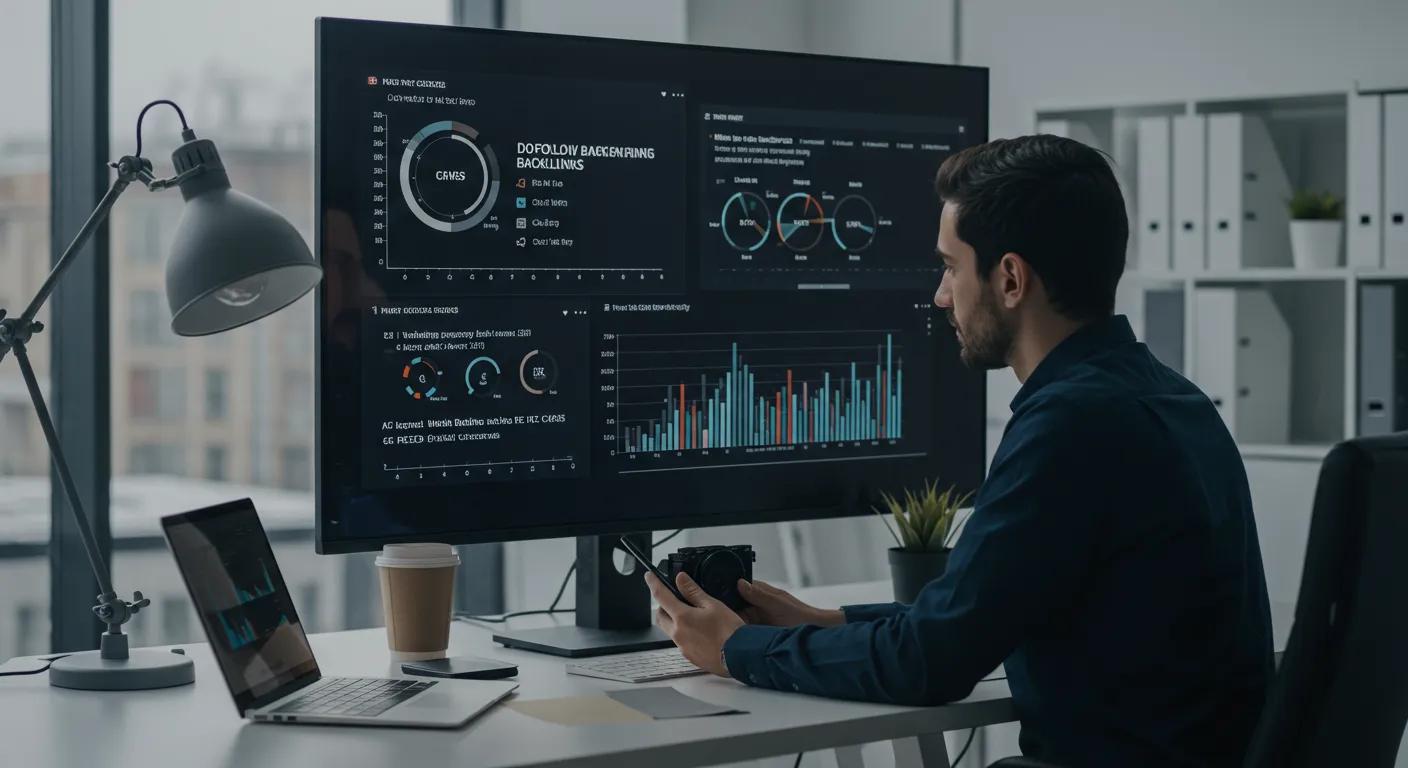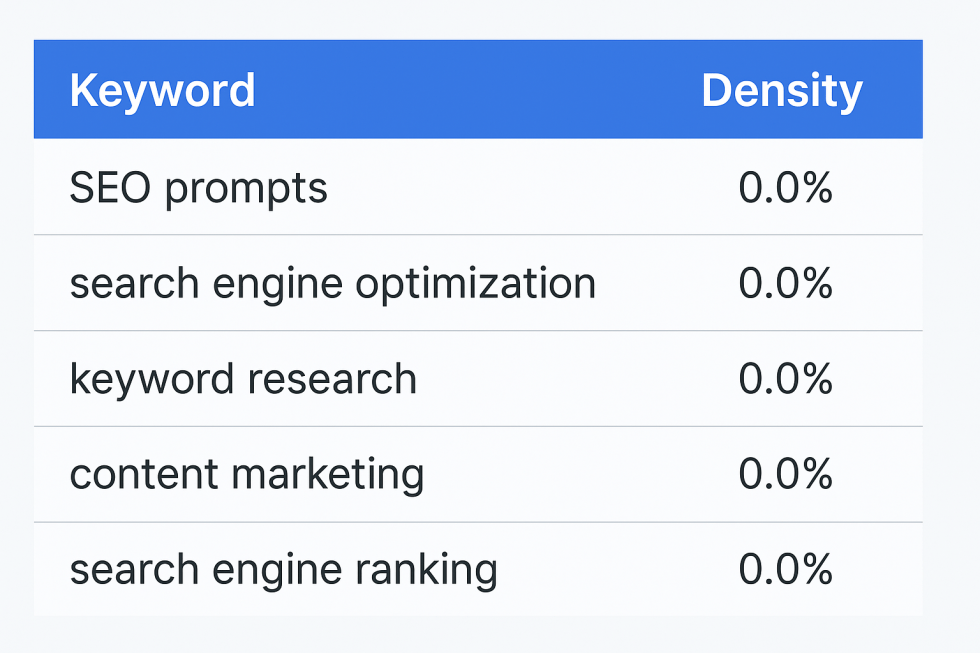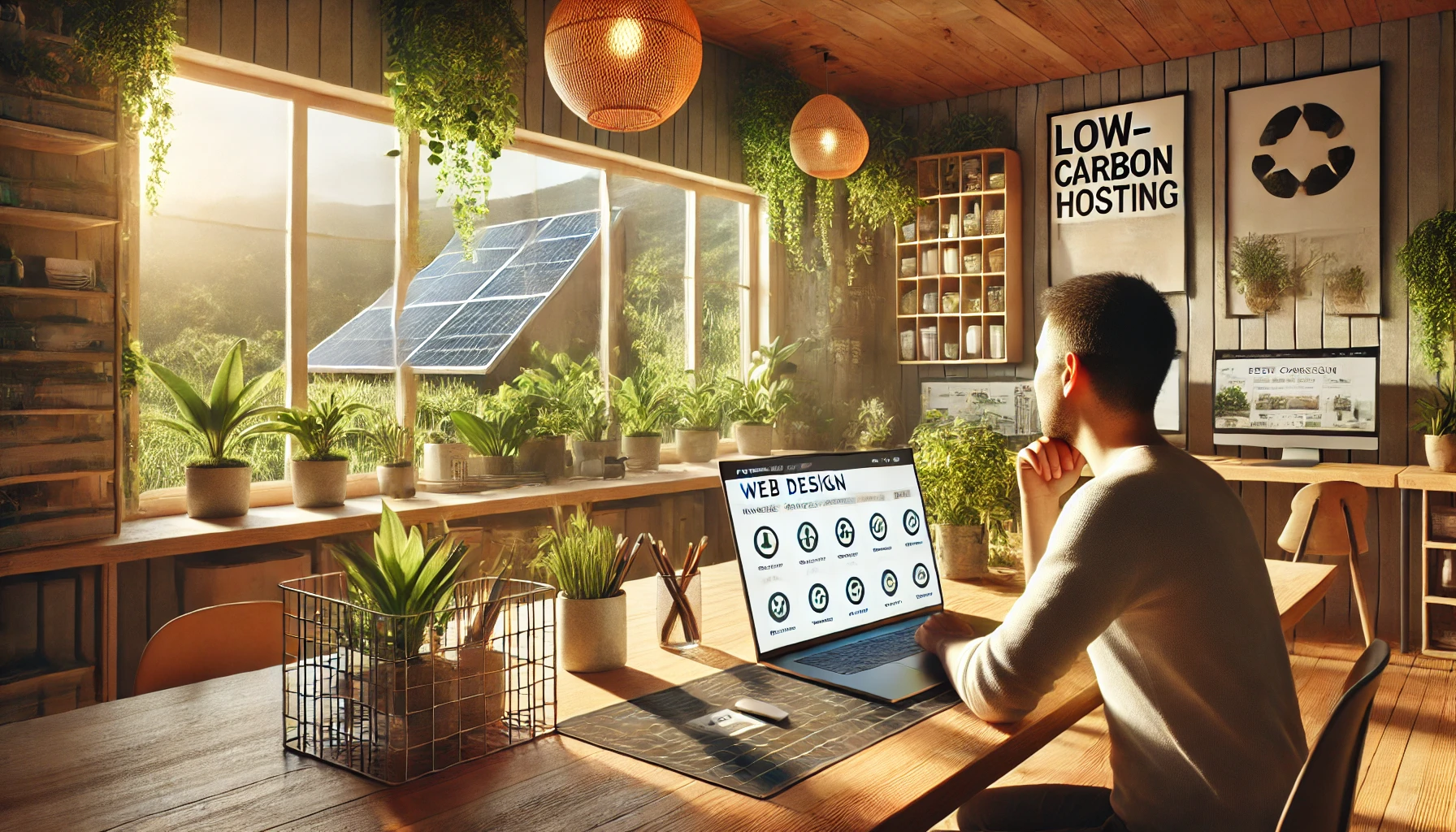
Design choices do more than shape a website's appearance - they directly impact how well it ranks on search engines. For designers, understanding the core principles of on-page SEO is no longer optional. Smart layouts, clean HTML code, and user-first experiences are essential to both aesthetic excellence and organic discoverability. This guide breaks down exactly how on-page SEO for designers can elevate not just the look of your site, but its performance in Google search results.
From using semantic HTML to align structure with search crawling logic to optimizing visual elements for Core Web Vitals performance, every section ahead is tailored to help you integrate SEO without compromising design. Explore the key tactics that will help you design with both pixels and page rankings in mind.
Key Takeaways
- <span style="font-weight: 400;">Use semantic HTML tags like </span><span style="font-weight: 400;"><section></span><span style="font-weight: 400;"> and </span><span style="font-weight: 400;"><article></span><span style="font-weight: 400;"> to improve crawlability, content hierarchy, and SEO relevance</span>
- <span style="font-weight: 400;">Optimize layouts for Core Web Vitals by minimizing layout shifts, compressing assets, and preloading critical fonts</span>
- <span style="font-weight: 400;">Implement responsive, mobile-first design to pass Google’s mobile usability benchmarks and boost mobile rankings</span>
- <span style="font-weight: 400;">Balance typography aesthetics with speed by limiting custom fonts and using </span><span style="font-weight: 400;">font-display: swap</span><span style="font-weight: 400;"> for smoother rendering</span>
- <span style="font-weight: 400;">Avoid hiding key content in modals or tabs, as non-visible elements may not be indexed by search bots</span>
- <span style="font-weight: 400;">Design with on-page SEO principles from the start, ensuring clean code structure, fast loading, and scannable content</span>
Designing for Search and Style
Successful on-page SEO for designers isn’t a tug-of-war between aesthetics and ranking performance. Instead, it’s about synergy - where clean, attractive design boosts usability, engagement, and SEO signals. A visually compelling layout aligned with search-focused structure enhances crawlability and user behavior metrics like bounce rate and time on site.
Key design elements like spacing, color contrast, button placement, and header hierarchy do more than serve the user - they shape how search engines interpret your site’s content relevance. For example, maintaining visual hierarchy with proper heading tags not only aids accessibility but also improves indexation. Similarly, mobile-first responsive design aligns with Google’s mobile usability standards, directly influencing SERP rankings.
Understanding how to design for both users and search engines means treating design itself as an on-page ranking factor. By thoughtfully organizing elements to work with core SEO signals like page speed, mobile responsiveness, and engagement cues, you create pages that satisfy both style and SEO.
Content, Crawling & Indexability: Don’t Let Design Block Discovery
Design choices can unknowingly restrict search engine bots from accessing key content. Overuse of JavaScript frameworks, modals, or tab systems can bury essential on-page elements, preventing them from being crawled or indexed. Designers must evaluate how front-end interactivity impacts content visibility.
Ensure crawlable content by avoiding content nesting within expandable sections by default. Search crawlers don’t interact - if it's not visible when the page loads, it might not be indexed. Similarly, be cautious with custom font loaders and animations that delay text render timing, negatively affecting Google’s Largest Contentful Paint (LCP) score.
Integrate SEO-aware design checkpoints early in the wireframing process. Consider working with developers to leverage tools like AI tools for refining on-page SEO that simulate bot behavior and flag visibility issues before launch. This ensures your visual creativity doesn’t compromise site discoverability.
Fonts, Icons & Images: Creative Choices That Can Kill Rankings
Typography and visual assets are central to compelling web design, but mishandled, they can damage performance metrics and usability scores critical for on-page SEO success.
Fonts and SEO Impact: Readability vs. Renderability
Custom fonts add branding flair but can increase load times if not properly optimized. Font files, particularly when pulled from remote servers or using multiple variants, increase First Contentful Paint (FCP). Consider subsetting only used characters and preloading key fonts to improve render speed.
Readable font choices also influence SEO indirectly. Google monitors bounce rates and behavioral engagement; small, condensed, or low-contrast text reduces readability, leading to weaker dwell time. Aim for a balance of design aesthetics and device-friendly legibility.
Use system fonts when speed is critical, and limit fallback chains. Avoid Flash-of-Unstyled-Text (FOUT) by adding font-display: swap to CSS rules, ensuring content remains visible even if fonts load later.
Beautiful Imagery, Optimized Smartly
While high-resolution imagery enhances visual identity, designers must compress and format assets intelligently. Oversized hero images, uncompressed PNGs, or unused background decorations can critically impair site speed - especially on mobile networks.
Use next-gen formats like WebP or AVIF wherever possible. Lazy-load below-the-fold images and use responsive srcset attributes to avoid serving large assets to small screen devices. Use descriptive filenames and optimized alt tags to support image SEO and accessibility standards.
Tools like SEO prompts for improved content can help identify underperforming visual content affecting search rankings, helping maintain SEO impact without sacrificing artistic value.
The Structure Matters: Semantic HTML That Makes Search Bots Smile
HTML structure is more than markup - when done properly, it enhances indexing, accessibility, and content comprehension. Semantic HTML provides clear content organization, helping search algorithms interpret relationships across headings, sections, and interactive elements.
Don't Skip the Meaning: Using Semantic Tags Effectively
Elements like <header>, <article>, <section>, and <nav> aren’t just for developer readability. They improve screen reader accessibility and inform search bots about content roles and hierarchy. Correct use of <h1> through <h6> tags builds a digestible content structure for both users and search crawlers.
Avoid using <div>s for all blocks. If your layout relies entirely on generic containers, you miss out on both indexing clarity and rank-worthy accessibility cues. Always map visual importance to correct semantic meaning.
SEO-Friendly Design Starts with Clean HTML
Bloated markup decreases load speed, harms crawlability, and weakens user experience. Clean HTML ensures your CSS and scripts don’t block render-critical content. Keep code modular, compress inline styles, and preload mission-critical assets effectively.
From meta tags to fast loading times, every component in the HTML structure determines how your design appears in search. Make sure your visuals and code organization don’t obscure what bots and users need most.
Design for Speed: Core Web Vitals Optimization Checklist
Page speed is non-negotiable. Google's Core Web Vitals ranking update evaluates real-user experience based on loading efficiency, interactivity, and layout stability - factors directly shaped by design decisions.
Use the checklist below to meet design-driven benchmarks for high-performing, SEO-friendly web design:
Core Web Vitals Checklist for Designers:
- <span style="font-weight: 400;">Compress all images before upload (WebP preferred)</span>
- <span style="font-weight: 400;">Preload critical fonts and avoid unnecessary font weights</span>
- <span style="font-weight: 400;">Minimize layout shifts above-the-fold (LCP and CLS)</span>
- <span style="font-weight: 400;">Optimize button tap targets for mobile touch usability</span>
- <span style="font-weight: 400;">Restrict use of heavy JavaScript-based animations or preloaders</span>
- <span style="font-weight: 400;">Avoid full-screen hero videos unless efficiently compressed</span>
- <span style="font-weight: 400;">Audit embedded third-party plugins for performance impact</span>
- <span style="font-weight: 400;">Use proportional grid systems for layout stability across screen sizes</span>
When Core Web Vitals decline, rankings suffer. Designers have immense influence over these metrics - they’re not just developer responsibilities.
Mobile-First, Always: Responsive Design That Ranks
Designing for mobile isn’t just a design trend - it’s a technical requirement embedded in SEO algorithms. Google indexes mobile versions first. If your design doesn’t scale seamlessly or hinders touch usability, your SEO rankings can suffer regardless of content quality.
Prioritize fluid layouts using CSS media queries and mobile breakpoints. Ensure text remains legible without zooming, and that tap targets follow accessibility recommendations. Don’t rely on hover states that break on touchscreen devices.
Consistent mobile styling directly supports usability scores. A well-structured, cleanly spaced layout reduces friction and signals usability - a frequently overlooked ranking factor in avoiding development mistakes that hurt SEO.
Visual Hierarchy and Layout: Guiding Both Users and Bots
Smart visual hierarchy leads users instinctively through content and influences how search engines prioritize page elements. Designers must align layout decisions with keyword intent and semantic content order.
Use consistent heading sizes and spacing to reflect content structure. Prioritize element placement using commonly tested F-pattern or Z-pattern layouts that match natural scanning behavior. Strategic positioning of CTAs, feature images, and content sequences not only convert better - they improve SEO by enhancing content engagement flow.
Remember, search engines interpret top-loaded content as primary. Make the first screen count with focused, keyword-optimized headers and engaging, intent-matching copy. Use modular card layouts to organize content sections with visually distinct yet crawlable structure.
Practical Implementation: SEO Design Checklist for Every Project
On-page SEO for designers becomes manageable when embedded directly into the creative workflow. This action-focused section helps internalize repeatable best practices that scale with each web design project.
Your Go-To On-Page SEO Design Checklist
Here’s a practical, design-centric checklist covering critical SEO standards without compromising creative direction:
SEO Design Checklist:
- <span style="font-weight: 400;">✅ Use semantic HTML for headings, body content, and navigation roles</span>
- <span style="font-weight: 400;">✅ Optimize images with </span><span style="font-weight: 400;">alt</span><span style="font-weight: 400;"> text, compression, and lazy loading scripts</span>
- <span style="font-weight: 400;">✅ Ensure font readability and rendering speed through optimized fonts</span>
- <span style="font-weight: 400;">✅ Apply responsive design from the initial wireframe phase</span>
- <span style="font-weight: 400;">✅ Structure content into scannable sections using appropriate H2/H3 tags</span>
- <span style="font-weight: 400;">✅ Reduce blocking scripts and preload essential assets</span>
- <span style="font-weight: 400;">✅ Verify mobile presentation and tap target dimensions visually</span>
- <span style="font-weight: 400;">✅ Avoid design components that hide important content</span>
- <span style="font-weight: 400;">✅ Balance space with tight UX logic to maintain flow</span>
- <span style="font-weight: 400;">✅ Document layout shifts to align with Core Web Vitals expectations</span>
This workflow ensures every aesthetic decision - from spacing to asset performance - supports SEO from day one.
Common SEO Design Mistakes (and How to Fix Them)
Even experienced designers encounter SEO pitfalls. Spotting and resolving them proactively strengthens project success:
- **Overusing smooth animations**<span style="font-weight: 400;">: Cause interaction lag and drain performance. Use only when necessary</span>
- **Large unoptimized hero images**<span style="font-weight: 400;">: Compress and apply responsive file formats</span>
- **Inconsistent heading tag use**<span style="font-weight: 400;">: Maintain one </span><span style="font-weight: 400;"><h1></span><span style="font-weight: 400;"> per page, followed logically by </span><span style="font-weight: 400;"><h2></span><span style="font-weight: 400;">s and </span><span style="font-weight: 400;"><h3></span><span style="font-weight: 400;">s</span>
- **Attempting to hide SEO text**<span style="font-weight: 400;">: Google flags deceptive practices. Integrate content naturally</span>
- **Ignoring mobile display issues**<span style="font-weight: 400;">: Test responsiveness across breakpoints using tools or physical devices</span>
Fixing these issues boosts crawlability and user satisfaction. For deeper insights into optimizing visibility, explore strategies to boost site ranking in listings, aligning aesthetic excellence with search performance.
Designing with SEO Intent: Why It Matters Now
In today’s digital landscape, mastering on-page SEO for designers is no longer optional - it’s a creative imperative that determines whether your site delivers visibility along with beauty. Every layout decision, font choice, and interaction design influences how users and search engines experience your work. By integrating modern SEO principles throughout your creative process, you’re not just elevating design aesthetics - you’re optimizing visibility and organic reach. Now more than ever, Google rewards websites that are fast, readable, mobile-optimized, and semantically structured. Forward-thinking designers who balance beauty with performance unlock higher search rankings and deeper audience engagement. So the next time you wireframe, don't only ask if it looks compelling - ask if it performs well too. SEO-conscious design isn't just smart - it's strategic. The most impactful work will be the work that not only looks stunning but also gets seen. Make every design pixel count.
Frequently Asked Questions
📧 Stay Updated
Get the latest web development tips and insights delivered to your inbox.




